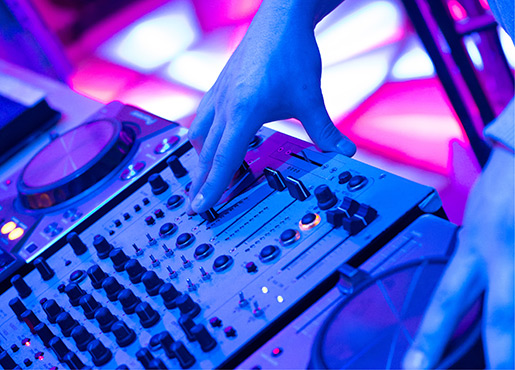The Impact and History of Disco
By Richard Paton
The best documentaries not only take a deep dive into their subject matter – they provide context, both social and political, and examine the ramifications or fallout from the subject at hand.
There is no better example than “Disco – Soundtrack of a Revolution,” a three-part documentary series that aired on WGTE-HD.
And it bears relevance to Electronic Currents because without disco, there wouldn’t have been electronic dance music. The rise and - literally - explosive fall of disco directly led to the foundational elements of house music.
The documentary is particularly fascinating as it charts this transformation into electronic dance music – providing a coda of sorts to the turbulent story of disco.
As it shows electronic dance music emerging in Chicago where Frankie Knuckles moved from New York to DJ at the Warehouse club, which gave rise to “house” music, and in Detroit where the “Belleville Three” of Juan Atkins, Derrick May, and Kevin Saunderson originated “Detroit Techno,” it pinpoints the genesis of electronic dance music as it began its journey towards the global soundtrack it is today.
And the story of disco shows that it was in many ways a precursor of dance music in a broader sense, from its beginnings in the gay and minority communities, through mainstream acceptance and, almost inevitably, over-exposure and commercialisation by record labels thinking that a disco beat would make the registers ring, to its implosion after Disco Demolition Night at Chicago’s Comiskey Park in 1979.
But while they have so many elements in common, an essential distinction between the two genres of dance music is that EDM continues to thrive decades after emerging from Chicago and Detroit.
And perhaps that is because despite their similarities, and parent-offspring relationship, disco and EDM do have fundamental differences.
Part of that is simply the eras in which they developed and thrived. The gay and Black club scene that birthed disco in the ‘70s has to be seen against the social backdrop of the times when discrimination and antipathy forged dislike for the culture and the music.
And the excessses of disco - most famously with Studio 54 and its legendary (and in its own way discriminatory) door policy - added a layer of elitism and coastal disdain toward those who were’t part of the “in crowd.”
Similar exceesses have plagued EDM as well, as the “superclubs” rose up when the music grew in popularity. Those clubs have largely gone by the wayside, but dance music has not.
Dance music has ben co-opted for advertisements, and for sporting events - as I mentioned in my last blog entry here – but that has seemingly had the opposite effect to that which it had on disco.
Instead of diluting EDM, of undermining its essential qualities, commercialisation has become just one element in what might be described as the “big tent” of dance music.
Euphoric trance and hard-core techno co-exist. Sweaty clubs and vast festivals such as Electric Daisy Carnival or Ultra Music Festival are opposite ends of the cultural spectrum that is EDM.
And “Disco – Soundtrack of a Revolution” evocatively shows how it began, all set to the glorious 4/4 beat of dance music – whether you call it disco or house.
- Home
- Schedules
- TV
- TV
- Local TV Programs
- Business | Life 360 with Kristi K.
- Toledo Stories
- To The Point with Doni Miller
- Listening with Keith Burris
- Ideas & Insights
- WGTE Presents
- BL360: Northwest Ohio Innovation Consortium
- Magic of the Old West End
- Freedom Means Never Surrender
- I&I: The Random Factor
- FF: National Cherry Festival
- TTP: Moms Demand Action For Gun Sense in America
- Watch Live
- Radio
- Education
- Community
- Support
- About
- Donate
- Watch Live



